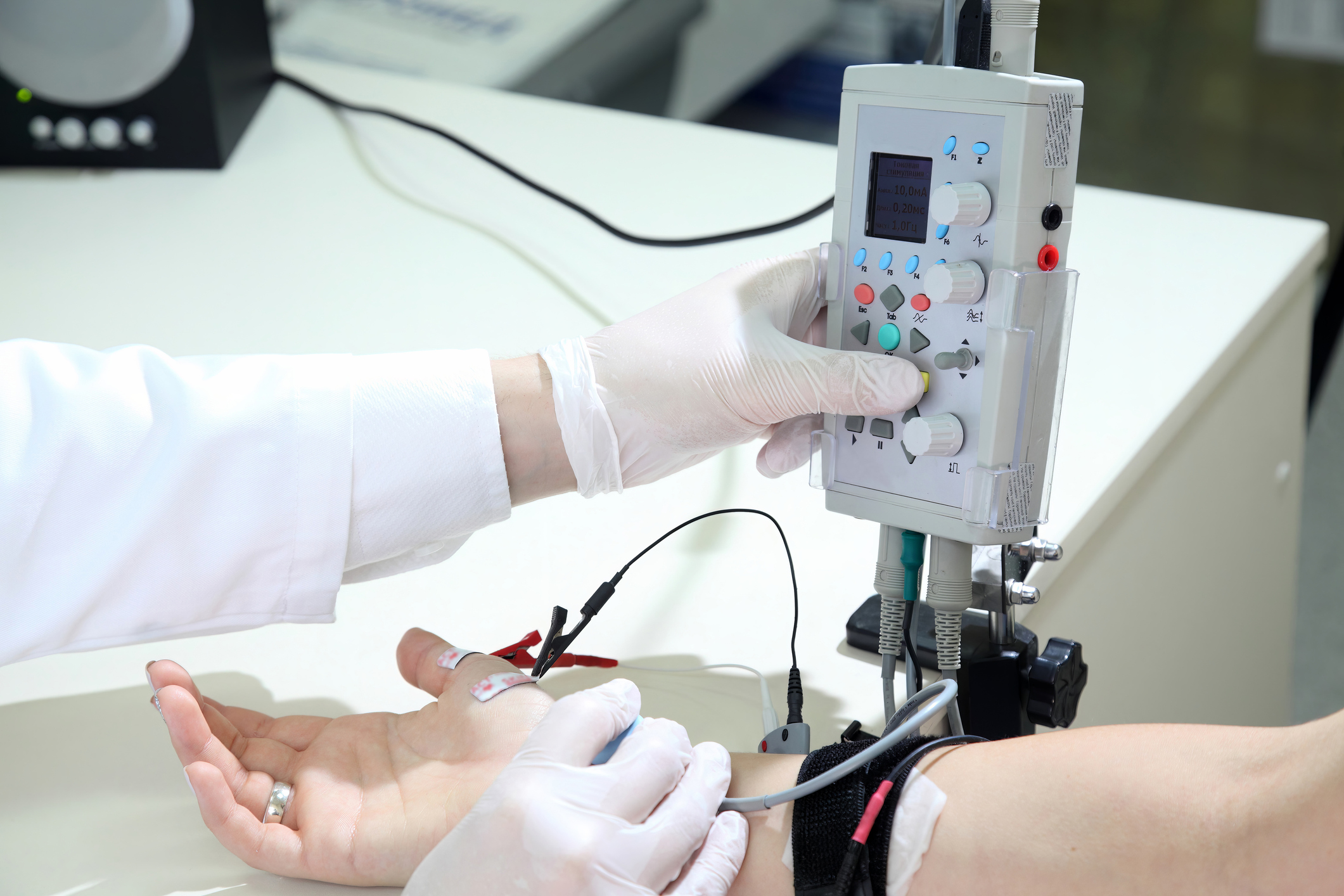EMG (Electromyography)
Orange County
EMGs are an essential tool in diagnosing neurological diseases. If you are seeking electromyography services to assist in the diagnosis of a complex or common neurological disease, you can trust Coast Spine and Sports Medicine. We welcome patients from Orange County, Los Angeles County, Inland Empire and the surrounding areas of California.
What is an EMG?
An EMG, or electromyography, is a diagnostic tool used to diagnose conditions that affect the nerves and/or muscles. The nerves transmit electrical signals to cause muscle contractions. EMGs can detect these signals and interpret whether the nerves are communicating with the muscles properly. Depending on the results from an EMG, this process can help diagnose or rule out certain conditions. Primarily, EMGs are used to assess neurological, muscular and neuromuscular disorders.

When is an EMG Necessary?
An EMG may be necessary if you are experiencing symptoms that are indicative of nerve or muscular disorders. These types of symptoms include:
- Tingling
- Numbness
- Muscle pain or weakness
- Muscle twitching
What Happens During an EMG Test?
During an EMG test, you’ll lie down on an examination table.
The first part of the procedure is performed on the body’s surface. For this component, sensors will be placed on the skin in the areas where you are experiencing symptoms. These sensors will send electrical signals that cause the underlying muscles to contract. This evaluates the body’s ability to send signals to the muscles. This portion of the EMG is generally comfortable, although you will feel spasms in the muscles as contractions are triggered by the electrical signals.
The second part of the EMG test is known as a needle EMG. For this component, small needles are inserted directly into the muscle tissue. Again, electrical signals will be delivered to the body to evaluate whether it is properly transmitting these signals. The needle EMG test is essential because it allows us to evaluate the muscles both during rest and during contraction. This portion of the EMG can be slightly uncomfortable as the needles are inserted into the muscles, but most patients tolerate it well.
After the second portion of the EMG test, the procedure is complete. It typically takes about one hour to perform an EMG test.
How Do I Prepare for an EMG Test?
Before your EMG, we may ask you to discontinue the use of certain medications. Additionally, you’ll need to avoid smoking and the use of alcohol at least 24 hours beforehand. It’s important that you bathe or shower prior to coming in for your exam, as any skin oils can impact the efficacy of the EMG test. Finally, patients are encouraged to wear comfortable clothing to the test. We will ask you to change into a hospital gown for the exam, and this is made easier when patients are dressed comfortably.
What Happens After an EMG Test?
After an EMG, you may experience minor soreness or bruising in the test areas. However, there is no downtime required and you’ll be free to return to normal activities.
Upon reviewing your EMG results, we’ll be better equipped to rule out or diagnose muscle disorders, nerve disorders, or other injuries that may be affecting the treatment area. Based on these results, we’ll be able to recommend either further testing or the appropriate treatments to help you find relief.
At Coast Spine and Sports Medicine, we offer EMGs and nerve conduction studies to help provide comprehensive orthopedic and pain medicine care. If you need this study done, please contact our office to get it scheduled. We welcome patients from Orange County, Los Angeles County, Inland Empire and the surrounding areas of California.
